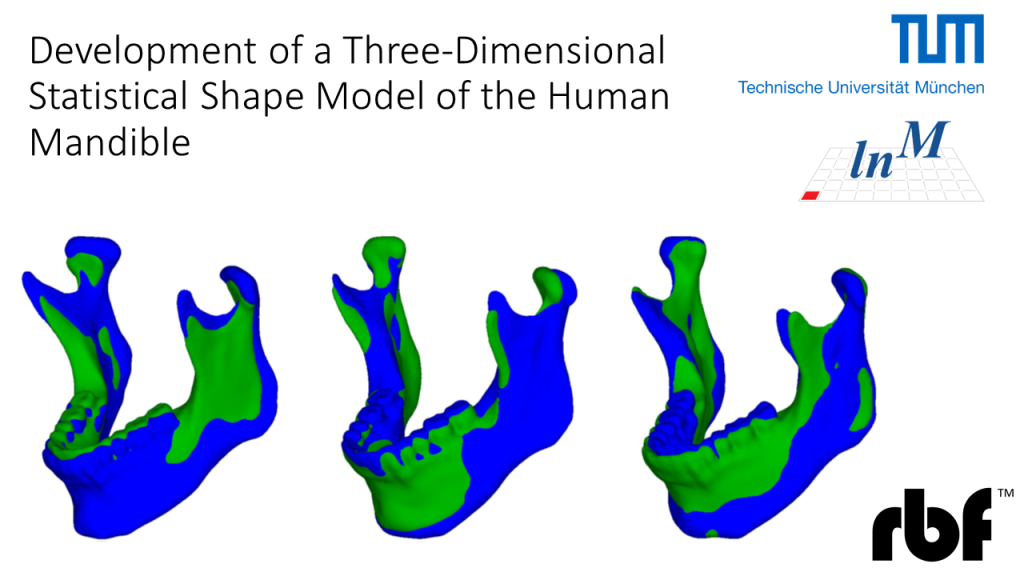3D patient-specific computer models are a powerful tool for surgical planning, but generating them is time-consuming and expensive. Statistical shape models (SSMs) can provide a solution, as they can capture anatomical variations and represent different shapes in a parameterized manner.
RBF Morph provides a stand alone software managed by Python. The software was used for the Bachelor’s thesis, “Development of a Three-Dimensional Statistical Shape Model of the Human Mandible” by Kilian Johannes Richthofer at the Computational Mechanobiology Group of the Julius Wolff Institute, Charite-Universitaetsmedizin Berlin.

This study aimed to create such an SSM of healthy human mandibles, to be used later to accelerate the development of patient-specific models. After obtaining 3D meshes from segmented healthy mandibles, they were morphed to achieve correspondence. This was done using two different tools, RBF Morph and PIPER, in an attempt to find easily applicable and transferable ways for mesh morphing. To serve as training data for the SSM, morphed results with satisfactory geometrical fit, a consistent mesh structure and increasing mesh quality could be created. With them as a basis, the SSM was generated, using principal component analysis. The variations of the model were examined and they proved that SSMs of the human mandible can be achieved using mostly easily available tools with the established workflow.
This RBF Morph stand alone solution is particularly useful in the healthcare sector to create SSMs for clinical practice in a fast and cost-effective way.



